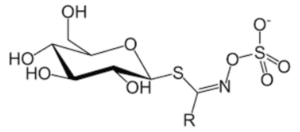Watercress (Nasturtium officinale) is a cruciferous plant from the Brassicaceae family. The plant is cultivated in several regions of the world, mainly in India, Egypt, Europe, Asia and Africa. It can grow in humid and wet areas and has a succulent and hollow stem, well-branched and with many leaves (Cao and Berent, 2018). It is a natural source of antioxidants, with direct application in medicine and the food industry (Boligon et al., 2013).
Its characteristics make it a food rich in phytonutrients. In addition, it contains important minerals such as potassium, calcium, phosphorus, sodium and magnesium (USDA, 2019). It is interesting to note that even though it is not a citrus fruit, its vitamin C content is similar to that of oranges. But it is not just about vitamin C; it also provides other vitamins, such as vitamins A and K. Due to its high content of vitamins A, lutein and zeaxanthin, watercress has a positive impact on eye health. Lutein and zeaxanthin are important pigments found in foods such as corn, eggs and green leafy vegetables. They play a key role in protecting the retina from damage caused by blue light and improving visual acuity. Studies suggest that these carotenoids may help reduce the risk of age-related macular degeneration (ABDEL-AAL et al., 2013).
In a 2014 study entitled Defining Powerhouse Fruits and Vegetables: A Nutrient Density Approach, 47 foods were evaluated in relation to the level of nutrients present. Watercress came in first place in relation to the density of these items, as it obtained a score of 100%. The parameter was calculated using the Darmon method (Di Noia, 2014). Among the flavonoid compounds present, quercetin and kaempferol stand out, acting in the prevention of DNA damage, in the fight against aging and in the reduction of the risk of atherosclerosis (Mazandarini et al., 2012).
This vegetable contains the bioactive compound called glucosinolate, which plants use as protection against sudden changes in the environment, microorganisms, and other conditions (Kamal et al., 2014). 2022). This compound is a phytochemical present in foods of plant origin, and has the ability to influence metabolic processes and contribute to the promotion of more balanced health (Clement et al., 2019). Below we see the glucosinolate molecule.

The relevance of glucosinolate is mainly associated with its antibacterial, antioxidant and anticancer properties, in addition to playing a role in the prevention of psoriasis, a condition that affects the skin.
Among the main benefits of watercress we have:
- Strengthening of the immune system;
- Improves vascular health;
- Antioxidant action;
- Improves digestion;
- Improves skin health;
- Eye health.
Bibliography
ABDEL-AL, M, El-Sayed et al. Dietary Sources of Lutein and Zeaxanthin Carotenoids and Their Role in Eye Health. Nutrients. Vol.5. 4.ed; 1169–1185, 2013. Available at https://www.researchgate.net/publication/236188131_Dietary_Sources_of_Lutein_and_Zeaxanthin_Carotenoids_and_Their_Role_in_Eye_Health. Accessed on 02/07/2025.
Boligon, A.A., Janovik, V., Boligon, A.A., Pivetta, C.R., Pereira, R.P., Rocha, J.B.T. Da, Athayde, M. L. (2013). HPLC analysis of polyphenolic compounds and antioxidant activity in Nasturtium officinale, International Journal of Food Properties, 16(1):61–69. Available at https://www.tandfonline.com/doi/full/10.1080/10942912.2010.528111#d1e532. Accessed on 02/05/2025.
Cao, L., and L. Berent. 2018. Nasturtium officinale W.T. Aiton. U.S. Geological Survey, Nonindigenous Aquatic Species Database, Gainesville, Florida. Available at: https://nas.er.usgs.gov/queries/factsheet.aspx?SpeciesID=229. Accessed on 02/04/2025.
Clemente M, Miguel MD, Felipe KB, Fujiwara GM, Fernandes LC, Dias Jd, et al. Can medicinal properties of watercress be relevant to human health? A systematic review based on preclinical study in vivo. Available at https://www.researchgate.net/publication/332037542_Can_Medicinal_Properties_of_Watercress_be_Relevant_to_Human_Health_A_Systematic_Review_Based_on_Preclinical_Study_In_vivo. Accessed on 02/04/2025.
Di Noia J. Defining Powerhouse Fruits and Vegetables: A Nutrient Density Approach. Prev Chronic Dis 2014;11:130390. DOI: http://dx.doi.org/10.5888/pcd11.130390. Accessed on 02/04/2025.
Kamal, R.M.; Abdull Razis, A.F.; Mohd Sukri, N.S.; Perimal, E.K.; Ahmad, H.; Patrick, R.; Djedaini-Pilard, F.; Mazzon, E.; Rigaud, S. Beneficial Health Effects of GlucosinolatesDerived Isothiocyanates on Cardiovascular and Neurodegenerative Diseases. Molecules 2022, 27, 624. https://doi.org/10.3390/molecules 27030624. Accessed on 02/04/2025.
Mazandarini, M., Momeji, A., Moghaddam, P.Z. (2012). Evaluation of phytochemical and antioxidant activities from different parts of Nasturtium officinale R. Br. in Mazandaran, Iranian Journal of Plant Physiology, 3(2):659-664. Available at https://www.researchgate.net/publication/329863946_Evaluation_of_phytochemical_and_antioxidant_activities_from_different_parts_of_Nasturtium_officinale_R_Br_in_Mazandaran. Accessed on 02/05/2024.
U.S. Department of Agriculture. Watercress, raw. Available at https://fdc.nal.usda.gov/food-details/170068/nutrients. Accessed on 02/04/2025.

